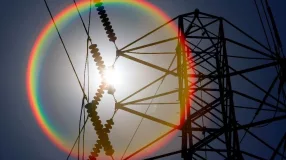Infrastructure Development in the Hands of U.S. Supreme Court
For the last several years, the Northeastern United States has experienced natural gas shortages, in large part due to a lack of pipeline capacity, depriving communities across New York and New England of clean, affordable and reliable fuel. The proposed PennEast pipeline is one of many pipelines seeking to remedy this capacity constraint, moving natural gas from production centers in Pennsylvania to end-users in New Jersey, providing fuel to heat homes, cook food, and run businesses.
In 2018, the Federal Energy Regulatory Commission (FERC) determined the proposed PennEast Pipeline from Pennsylvania to New Jersey to be in in the public’s interest. FERC issued a Certificate of Public Convenience and Necessity under the Natural Gas Act, a law that has provided a clear regulatory framework for natural gas infrastructure development for more than 80 years. Through this certificate, PennEast was given the right to use eminent domain as a means of last resort to successfully develop this project to meet the needs of consumers and benefit the public.
The PennEast project is supported by a number of stakeholders, including building and construction trades, local officials and the business community. However, the state challenges the legality of PennEast exercising eminent domain to acquire an easement that crosses state-owned land or land in which the state owns a conservation easement.
Last year, the dispute reached the U.S. Court of Appeals for the Third Circuit, which overturned a lower court decision and ruled that interstate natural gas pipeline companies cannot exercise the right of eminent domain on state land, despite the authority granted to them by Congress through the issuance of a Certificate of Public Convenience and Necessity under the Natural Gas Act. This decision is not only far-reaching, but if upheld, would have devastating consequences on our economy, job creation and our nation’s energy security.
The case is now before the U.S. Supreme Court, which shall decide whether to hear the case (grant certiorari) and review the Third Circuit’s consequential decision.
As INGAA’s Alex Oehler recently outlined in an OpEd on the topic:
“The fundamentals of our Constitution regulating interstate commerce, congressional intent under the Natural Gas Act, and the mutually beneficial economics of natural gas transmission between states leads us to a clear conclusion: The Court must hear this case and reverse a dangerous precedent.”
On June 29, the Supreme Court requested input from the U.S. Solicitor General before deciding whether to grant the petition and hear the case.
If left as it currently stands, the Third Circuit’s decision could allow any state to block a federally-approved infrastructure project simply by identifying a state ownership interest in the path of the project’s easement, further politicizing projects found to be in the public and the nation’s interest.
Over the past decade, the U.S. has become the global leader in natural gas production and with that, investment in related infrastructure has provided immense benefits to the country. This abundance of energy has also served as a catalyst to reduce greenhouse gas emissions, provided a resurgence in domestic manufacturing, lowered utility bills for consumers, and serves as a foundation for renewable energy to grow and prosper.
For these reasons and many thousands of jobs more, it is imperative that the U.S. Supreme Court hears this case so it can reverse a potentially devastating precedent that would impact the future of U.S. energy infrastructure.






